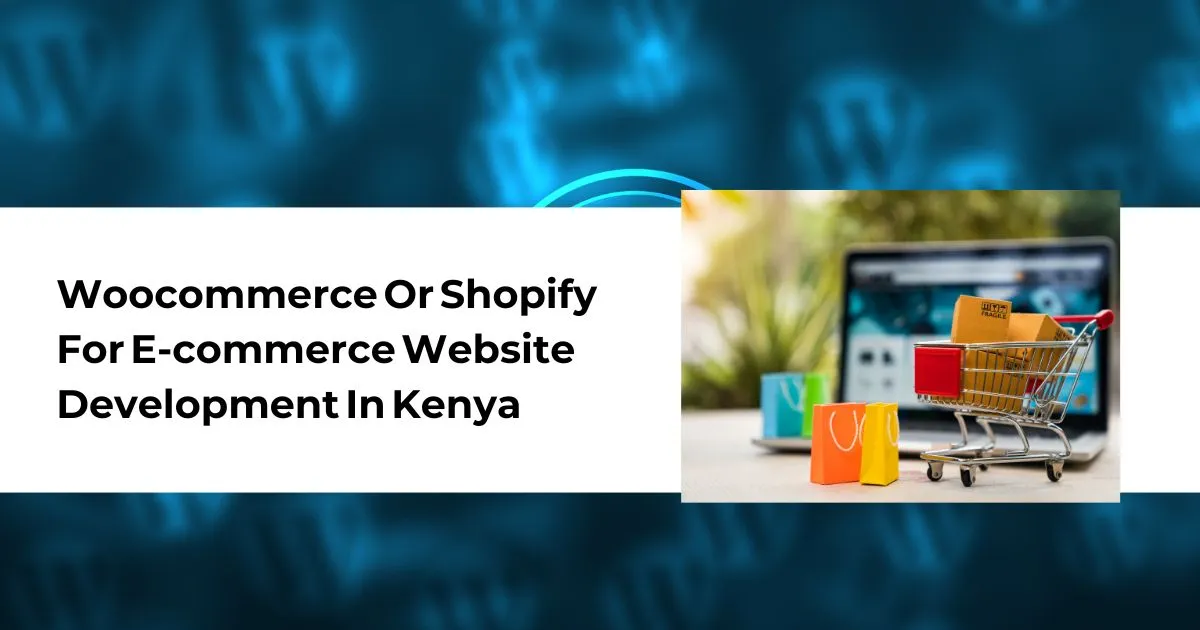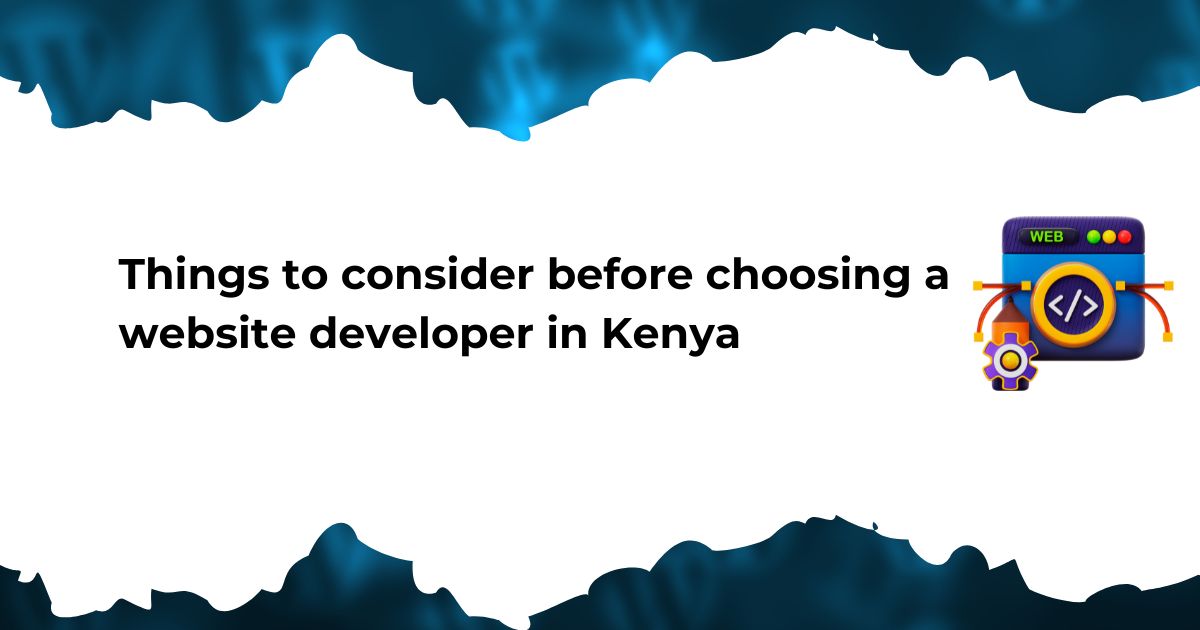If you’re launching into Kenya’s rapidly growing e-commerce scene, few decisions matter more than selecting the right platform to host your online store. WooCommerce and Shopify stand out as powerful contenders, each offering distinct benefits aimed at streamlining the setup, scaling, and management of your digital store. From budget concerns and design flexibility to ease of use and scalability, choosing between these two giants can set your business on course for significant growth—or painful limitations.
While Shopify claims over 3.2 million websites globally with a user-friendly, all-inclusive approach, WooCommerce steals the lead in popularity, powering more than 5 million active installations—especially appealing to businesses in Kenya for its adaptability and rich, easily customizable feature-set. Both platforms promise impressive result but target very different audiences: If you prefer simplicity and hosted convenience, Shopify could quickly get you off the ground. But if you crave total control and budget-friendly customization, WooCommerce on WordPress might be the best bet for your Kenyan e-commerce endeavour. Which should you choose? Let’s dive deeper and find out.
WooCommerce vs Shopify: Key Features and Functionalities
Okay, so when looking at WooCommerce versus Shopify, their features really set them apart, but they’re suited for pretty different types of users, y’know? WooCommerce runs on WordPress—it’s open source—which means you’ve got a tonne of flexibility, but you’ll need some technical skills (or someone who does) to manage everything yourself. The upside of that flexibility is the huge amount of plugins—I read somewhere on WordPress.org that there are now over 58,000 plugins, as of 2023, meaning you can really customise your shop the way you want. Shopify, on the other hand, is a hosted platform and you pay a monthly subscription fee, but they handle all the technical stuff—hosting, security updates, data privacy kinds of things, and backup—which takes a lot of stress off your shoulders, especially if you’re just starting and want something more straightforward. They also have ready-to-use themes that look pretty professional right out of the box. But, yeah… that convenience does come at a price—it’s not free like WooCommerce, and customising can be limited compared to WooCommerce’s huge open-source ecosystem. Since both platforms have different costs involved, maybe it’s worth comparing exactly what fees you’d be looking at developing your ecommerce site here in Kenya.
Cost Comparison Between WooCommerce and Shopify in Kenya
Alright, so if we’re talking costs—Shopify’s got these fixed pricing options, right; their Basic plan runs you about $29 per month, which might seem reasonable at first—but hold on, if you’ve got bigger plans, there’s their Advanced package jumping all the way up to $299 monthly. Definitely something to chew on for Kenyan entrepreneurs just starting out, since those fees can quickly stack up. On the flip side, WooCommerce itself won’t cost you a dime since it’s a free WordPress plugin; sure, you’ve still got to fork over some cash for separate hosting fees and domain registration, but you’ll typically end up spending less overall. Plus, WooCommerce isn’t gonna slap you with additional per-transaction costs when you’re using third-party payment providers, unlike Shopify, which might skim off extra fees—and believe me, those charges can really creep up and bite you later down the road. So given all this, costs are definitely part of the picture—but what if we look beyond price tags and talk about how each platform actually performs when it comes to customization and creating an appealing user experience?
Customization and User Experience: Which Platform is More Flexible?
When it comes to customisation and ease-of-use, these two platforms differ quite significantly. WooCommerce is built on WordPress, meaning you can dive deep into its open-source code and customise just about anything exactly how you want it—there’s more than 58,000 plugins currently available to stretch your creativity. Shopify, on the other hand, does provide a handy drag-and-drop setup (great for people not too keen on coding), but because it uses its own templating language—called Liquid—you’re going to bump against some limits if you’re looking to make super-specific tweaks at a developer level. Given WooCommerce’s open-source flexibility, you can craft totally unique plugins or integrate various tools that fit exactly what your e-commerce shop needs; Shopify doesn’t quite offer that same level of deep custom control. But a big part of choosing the right e-commerce platform in Kenya also depends on how seamlessly each option works with local payment methods and gateways—that’s worth looking at next.
Payment Integration and Local Payment Gateways Support in Kenya
When it comes to payment integration and local support here in Kenya, both platforms have their strengths and quirks worth mentioning. WooCommerce integrates rather smoothly with some of Kenya’s widely-used payment channels; for instance, it’s quite compatible with M-PESA and DPO (Direct Pay Online), two of the biggest local options familiar to many businesses here. Plus, one big upside—WooCommerce doesn’t tack any extra fees onto transactions processed through third-party gateways, a nice advantage to lower expenses (especially if your sales volume rises). Shopify, on its end, also connects readily with Kenyan payment providers—Flutterwave and Pesapal being among the leading gateways locally recognised—but keep in mind, Shopify does typically include transaction fees unless you’re using Shopify Payments, which isn’t available yet in Kenya. So, if added transaction costs are a concern, you’d definitely want to factor that into your decision. That said, payment gateway compatibility is just one part of the puzzle when you’re figuring out the ideal platform for your online store; choosing wisely between WooCommerce and Shopify requires looking beyond just payments.
Choosing the Right E-commerce Platform: WooCommerce or Shopify?
Okay, so when you’re comparing WooCommerce and Shopify, the choice really depends on what you’re looking for in your e-commerce business in Kenya right now. If you prefer to have full control and customise your website down to the tiniest detail, WooCommerce with its open-source platform is your best bet. But let’s say you’re after something simpler, something you can manage easily without any headaches—then Shopify might be just right, especially as it offers strong customer support that’ll guide you through any problems. Both are definitely scalable; as your business picks up, you can add new features or shift gears without much fuss.
Here’re 5 quick points to consider while choosing between WooCommerce and Shopify:
- WooCommerce is open-source, letting you tweak every part of your site.
- Shopify has excellent customer support and an easy-to-use interface, ideal if you’re not technically inclined.
- Both support scalability, so growing your site won’t be an issue whichever platform you choose.
- Ease of payment integration—check local payment gateways and fees for each platform in Kenya.
- Shopify subscriptions can add up monthly fees; WooCommerce may initially be cheaper but has hidden expenses (hosting, plugins, themes).
Whichever one you settle on, you’ve got to think about your skill set and resources available, because WooCommerce typically needs a bit more tech know-how; it’s trickier upfront but loads more customisable, whereas Shopify simplifies most processes at a recurring cost.
Frequently Asked Questions
What specific hosting requirements should Kenyan businesses consider for WooCommerce?
When Kenyan businesses set up WooCommerce, hosting’s a big deal—you can’t just wing it and expect to compete. You know, for instance, Mick Hosting offers specialised WooCommerce hosting plans, with perks like free domain names, better SSL certificates to secure transactions, and optimised servers. And since page loading times directly affect users’ experiences (a slow site will turn away potential customers quicker than you realise), choosing a local host becomes a smart move—servers set up locally in Nairobi, or Mombasa, for instance, significantly improve loading speeds for Kenyan shoppers. Plus, your host provider’s reliability impacts more than just speed; hosting downtime or security issues lead directly to lost revenue, especially during big sales periods (think Jumia Black Friday sales—downtime at these moments can be fatal!). But beyond speed and security, flexibility matters too; make sure your host supports WooCommerce’s tech requirements—like PHP 7.4 or greater, MySQL database version 5.6 or newer, and enough memory (128MB or higher)—or your shop might not run smoothly, causing frustration and dropouts. Another thing businesses forget is scalability—when you’re just starting out, minimal resources may suffice, but imagine when your traffic multiplies overnight because of a viral campaign or unexpected event (remember how Kenyan online shopping surged when COVID lockdowns happened in March 2020?); you’ll need a hosting provider that’s not only solid and affordable, but can scale quickly and efficiently. So, with hosting sorted, there’s another crucial question you might have on your mind—can Shopify or WooCommerce smoothly handle popular Kenyan payment gateways like M-Pesa?
Can Shopify or WooCommerce easily integrate popular Kenyan payment gateways like M-Pesa?
Absolutely—whether you’re thinking WooCommerce or Shopify, both platforms do a decent job of integrating popular Kenyan payment systems like M-PESA. Shopify, for instance, currently allows Kenyan users to tap into integrations with Flutterwave and PayGate, meaning customers dealing with Kenyan Shillings (KES) can seamlessly pay. On the flip side, WooCommerce, which runs on WordPress, can easily hook into locally preferred gateways too, including the widely-used DPO and M-PESA. That makes life easier for Kenya-based e-commerce stores; fewer payment frustrations, happier buyers. But the ease of use could fluctuate depending on technical know-how, costs, and setup processes—which entrepreneurs must closely evaluate. If we sum it up, the key points you’d want to remember here would be:
- Shopify integrates with Flutterwave and PayGate, simplifying payments for Kenyan e-commerce.
- WooCommerce smoothly works with local favourites such as DPO and M-PESA.
- Shopify’s solutions are hosted and user-friendly but might carry additional transaction fees.
- WooCommerce provides greater flexibility, with customisation options, but may demand slightly more technical know-how.
When choosing, it mostly depends what’s comfortable, practical, and affordable for your business; both platforms offer good enough support for local Kenyan payment gateways like M-PESA, acting as an essential factor for a successful local store. Next, you might be wondering—given you’re probably eyeing international markets—if Shopify or WooCommerce can handle multilingual setups and multi-currency support effectively for Kenyan businesses; let’s see about that.
Do Shopify or WooCommerce provide multilingual and multi-currency support beneficial for Kenyan e-commerce businesses targeting international customers?
Yeah, actually both Shopify and WooCommerce offer pretty good multilingual and multi-currency options, which could help Kenyan e-commerce sellers tap easily into the international market. Shopify includes built-in multilingual and multi-currency support across every subscription tier—no special plugins needed—meaning sellers can instantly offer their products in multiple languages and currencies. Similarly, WooCommerce’s approach is a bit more customizable, letting you set up flexible multi-currency options through WooPayments; plus, it supports multilingual setups, translations and stuff like that—so sellers can tailor their sites more specifically to whichever market they’re targeting. Each platform’s got benefits; Shopify makes it quicker, easier, straight out-the-box—that can be handy if you’re wanting straightforward simplicity—but WooCommerce gives you more flexibility and customisation, especially if you’ve got specific plans or ambitions as you grow internationally. Either way, Kenyan businesses have some solid solutions to scale beyond borders comfortably.
Conclusion
Deciding between WooCommerce and Shopify really comes down to your personal priorities and business needs. If you’re seeking lots of customization options and greater control over your ecommerce site, WooCommerce might be your best bet. But if ease of use, quick setup, and a simpler, streamlined interface matter most to you, then Shopify is probably the smarter choice.
In my opinion, it’s also essential to consider local payment gateways and ongoing costs here in Kenya. Ultimately, there’s no one-size-fits-all answer—I suggest evaluating your own needs, budget, and tech-savviness to choose the ecommerce platform that’ll help your business thrive.




